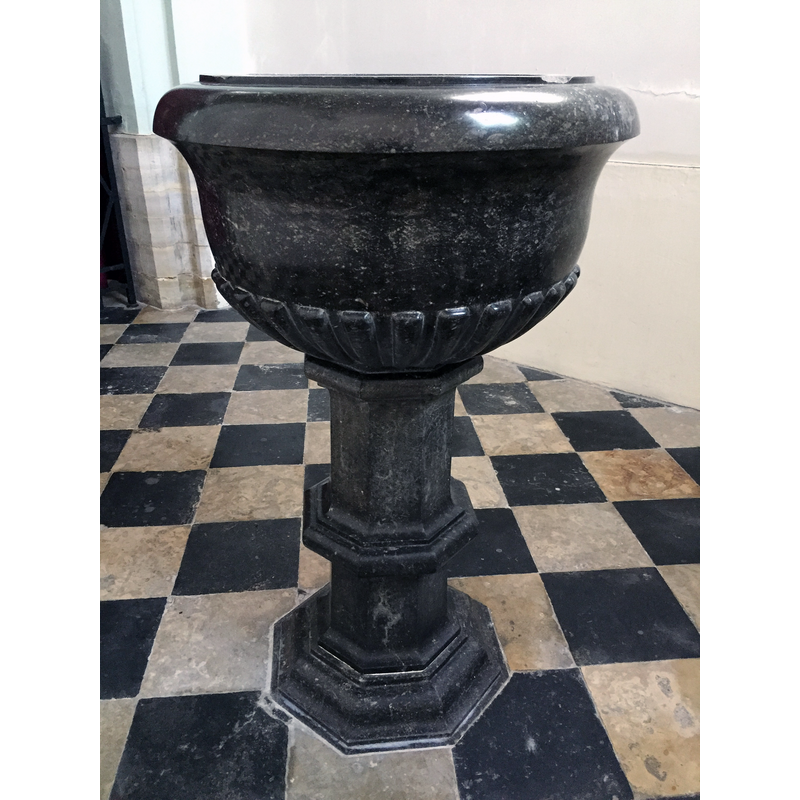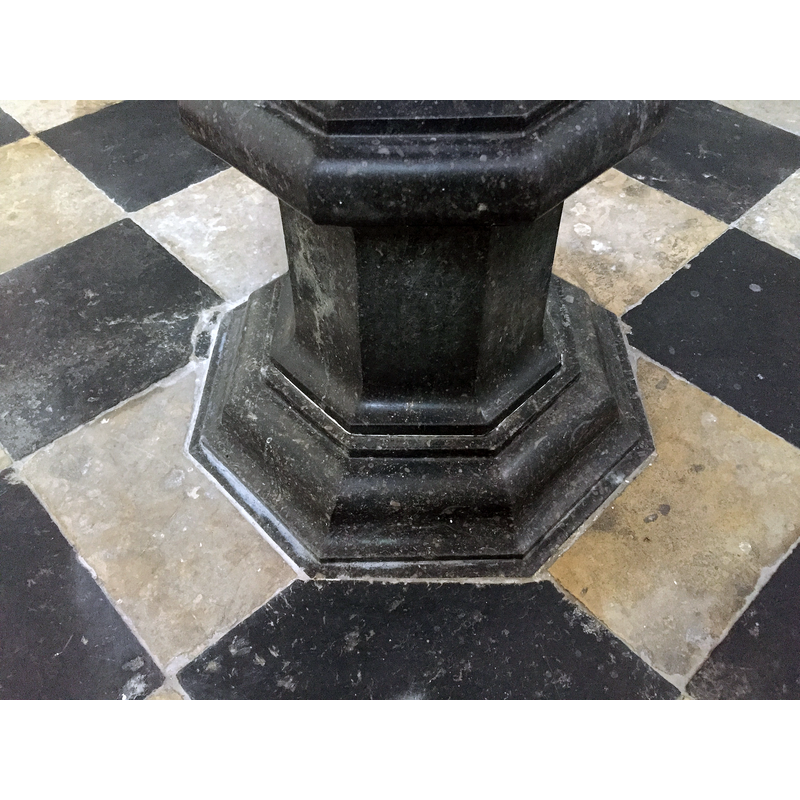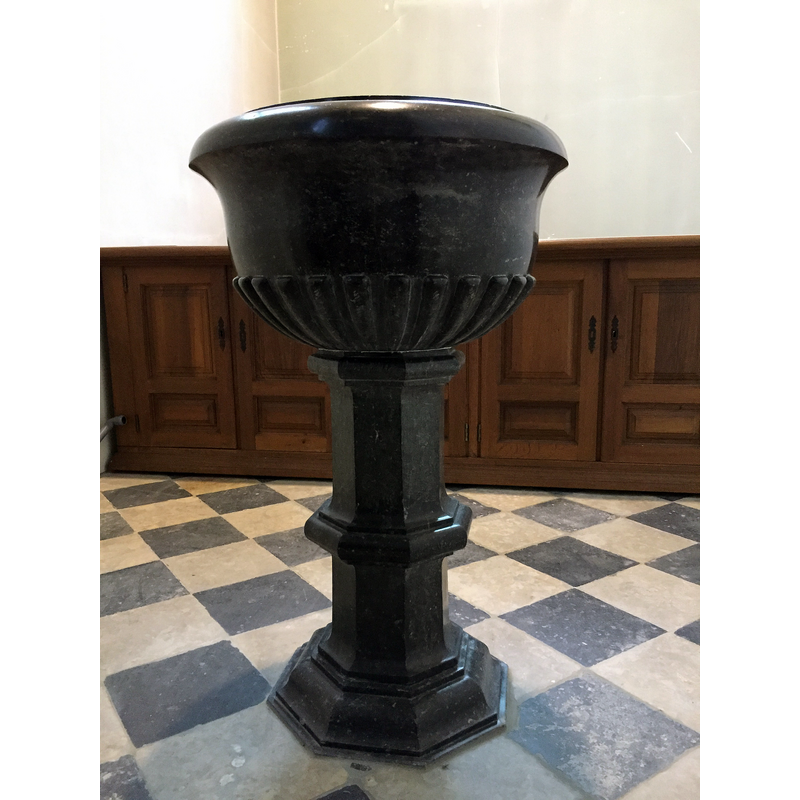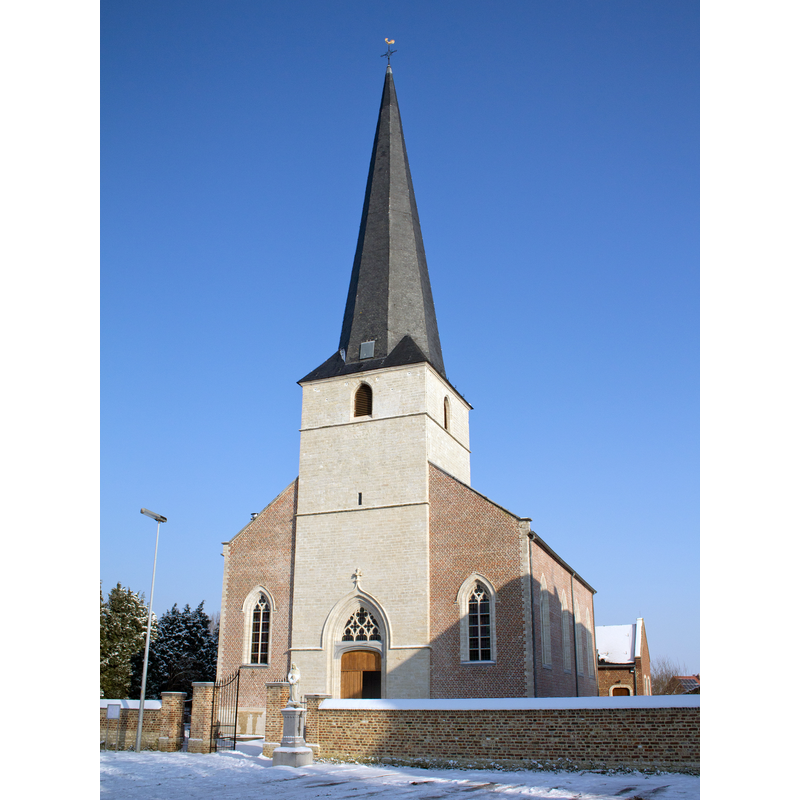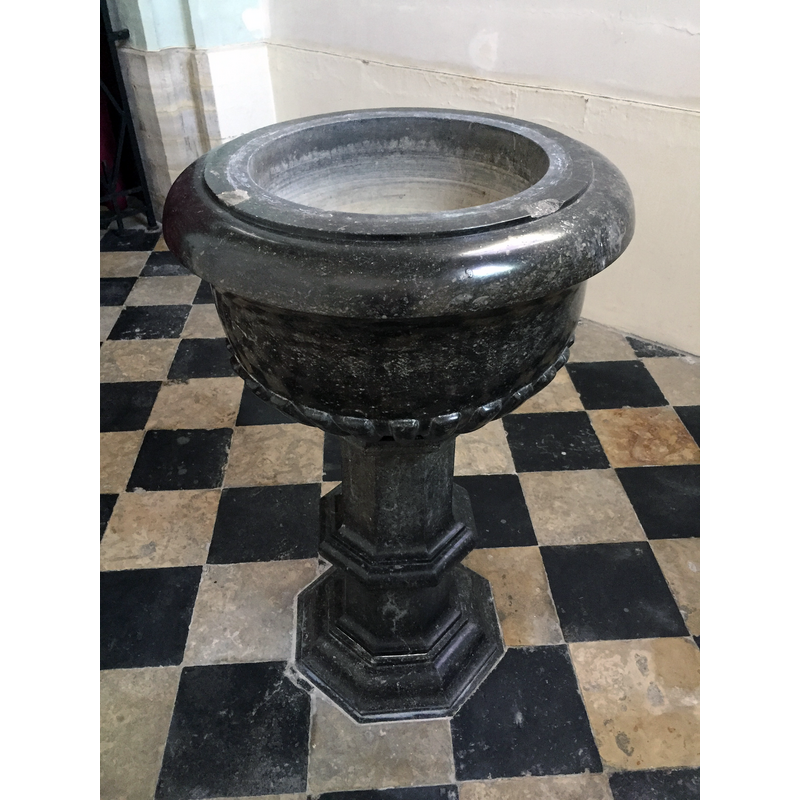Roosbeek / Roesbeke / Rosbecca
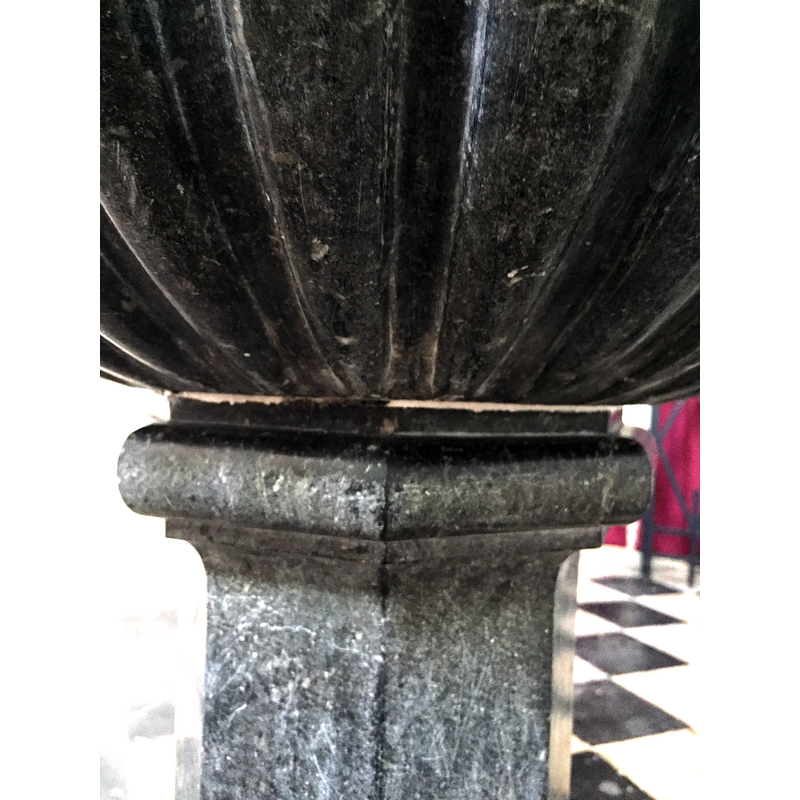
Image copyright © Daniël Vandenhoeck, V.Z.W. Hannah Acteum, 2021
Image and permission received from the author via Pol Herman (e-mail of 12 April 2023)
Results: 9 records
design element - motifs - moulding
design element - motifs - moulding
design element - motifs - moulding
design element - patterns - gadrooned
view of church exterior - southwest view
Scene Description: Source caption: "Parochiekerk Sint-Anna te Roosbeek"
Copyright Statement: Image copyright © Johan Bakker, 2013
Image Source: digital photograph 16 January 2013 by Johan Bakker [https://commons.wikimedia.org/wiki/File:41605_Parochiekerk_Sint-Anna_Roosbeek.jpg] [accessed 23 December 2023]
Copyright Instructions: CC-BY-SA-3.0
view of font
Scene Description: the early-17thC [composite?] baptismal font originally from Butsel, moved to Roosbeek
Copyright Statement: Image copyright © Daniël Vandenhoeck, V.Z.W. Hannah Acteum, 2021
Image Source: digital photograph 26 July 2021 by Daniël Vandenhoeck, V.Z.W. Hannah Acteum
Copyright Instructions: Image and permission received from the author via Pol Herman (e-mail of 12 April 2023)
view of font
view of font
view of font - detail
INFORMATION
FontID: 25189ROO
Object Type: Baptismal Font1
Church/Chapel: Sint-Anna parochiekerk in Roosbeek / Parochiekerk Sint-Anna te Roosbeek [now a multifunctional venue]
Church Patron Saints: St. Anne
Church Location: [address & coordinates are for the church in Roosbeek] Lubbeeksestraat 11, 3370 Boutersem, Belgium
Country Name: Belgium
Location: Vlaams-Brabant / Brabant Flamand, Vlaanderen / Flandres
Directions to Site: Roosbeek is off (N) the N3, in the municipality and 2 km SE of Boutersem, 6-7 km NW of Tienen
Ecclesiastic Region: Mechelen-Brussels
Font Location in Church: Inside the church [now a multifunctional venue]
Date: n.d.
Century and Period: 17th century[basin only?], Baroque [composite font?]
Credit and Acknowledgements: We are grateful to Pol Herman for bringing this font to our attention and for his help in documenting it. We are also grateful to Daniël Vandenhoeck, V.Z.W. Hannah Acteum, for the photographs of this font
Font Notes:
Click to view
A communication to BSI by Pol Herman (e-mail of 12 April 2023) informs: early-17th century baptismal font at Roosbeek, originally from Butsel, moved in 1645. The present font is probably a composite (basin seems to be younger than base/column); it is made of polished limestone; consistin of a round basin decorated with gadroons, on a Gothic base that could be a century older. The original brass lid was probably lost in WWII." Pol Herman's e-mail [cf. supra] includes additional information about the two churches, Butsel abd Roosbeek, and notes that this font is not listed in the BALaT KIK-IRPA database.
"Butsel. Saint Michael (formerly Saint Martin). The parish church of Butsel was dedicated to St. Martin but was renamed St. Michael in 1970 after the merger of the several municipalities, in order to avoid confusion with the church of St. Martin at Kerkom. Little is known about the earliest history of the church and of the parish. The hamlet of Butsel is first mentioned in 1140 as 'Buthesile'. Its urban development is strongly related to the mighty feudal castle of the lords of Boutersem. The church of Butsel is located only approximately 300 meters northeast of this castle. It was originally a Romanesque church located on the “dries” (French : trieu, Latin : triscum, https://fr.wikipedia.org/wiki/Les_Trieux), it therefore originally belonged to the local population. But as with many other churches, it later fell into the hands of the local lords, who came to see it as their own ‘private' church (eigenkerk). The original building was actually no more than a big chapel, of which today only the mid-Romanesque choir with round apse has survived (late 11th-early 12th century). The church preserves its Romanesque altar, a solid rectangular masonry with natural stone altar table with simple edge profile, currently hidden under the 18th century high altar. After the Council of Trent (1545-1563), local lords ceded their right to tithes to abbeys. The tithe rights of the church of Butsel henceforth belonged to the abbey of Villers-la-Ville. The abbey neglected the maintance of the building. Butsel was probably an independent parish until around 1600. Then it became part of the Boutersem parish, as a 'quarta capella'. In 1634 the church with its dilapidated wooden (?) tower largely collapsed as a result of years of neglect. Only the walls of the nave and the choir remained standing. In June 1635, a Franco-Dutch army caused further destruction. In 1649, just the windows and the roof of the choir were repaired. While only the bare walls of the nave were still standing. The church was hardly used, and the baptismal font was moved to Roosbeek in 1645. What exactly happened afterwards to the ruined church, and when it was rebuilt, remains unclear. Only through a Royal Decree of 4 April 1864 could the restoration of the church be started. A new neoclassical nave was built against the old choir."
"Roosbeek. Saint Anna Church. Today the church is disused and is a museum with multifunctional use [https://hannah-acteum.be/historie-van-de-sint-anna-kerk-roosbeek/] [accessed 23 December 2023] The settlement of Roosbeek is first mentioned in historical documents in 1136 under the name of Rosbecca. It was not until 1332 that the “tax book of the duke” referred to an “ecclesia de Roesbeke”. It is not clear exactly where this prayer house stood. Texts from 1559 also show that the church was dedicated to Our Lady. The tower dates from the fourteenth century. Gothic choir, circa 1500. In 1597, the dean described the condition of the church as very bad, caused by the constant threat of war and a lack of money. Both the roof and the walls were in urgent need of restoration. The sacristy and choir, which had partially collapsed, were finally restored in 1618. In 1618 St. Anne's Church was mentioned as a “quarte-chapelle” (church with limited rights) depending from the mother church at Cumptich. In 1631 the archiepiscopal archive Mechliniensia register 160 mentions “Roosbeeck habet ecclesiam pastoralem Sancte Anne” (Roosbeek has a parish church Sint Anna). During the Franco-Spanish War, an important battle was fought in 1635 in which the Frenchmen erected their tents in Breisem and Kerkom, while the combines Spanish-Dutch army of the enemy settled in Roosbeek and Boutersem. On that occasion, the church of Roosbeek was completely plundered. By the third quarter of the 17th century, the church of the neighboring parish of Butsel had practically become a ruin. To prevent worse, the baptismal font was transferred to the church of Roosbeek, where it still stands after more than 360 years. However, the original lid has disappeared (during the second world war?). Around the turn of the 17th century, the church of Roosbeek was again in a pitifully bad state. The neglect continued, repairs did not start until 1741. These was carried out in steps until 1762. In 1854 the church was enlarged, and during the renovations foundations of the building from the fifteenth century were discovered."
COORDINATES
Church Latitude & Longitude Decimal: 50.833419, 4.862633
Church Latitude & Longitude DMS: 50° 50′ 0.31″ N, 4° 51′ 45.48″ E
UTM: 31U 631163 5632954
MEDIUM AND MEASUREMENTS
Material: stone, limestone (black and blue) (Tournai marble)
Font Shape: hemispheric (mounted)
Basin Interior Shape: round
Basin Exterior Shape: round
